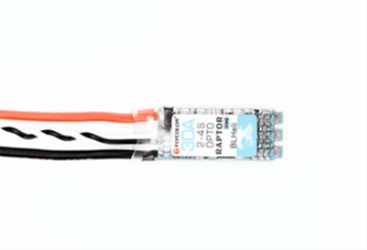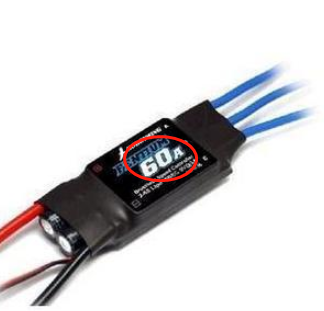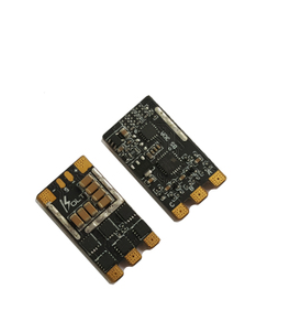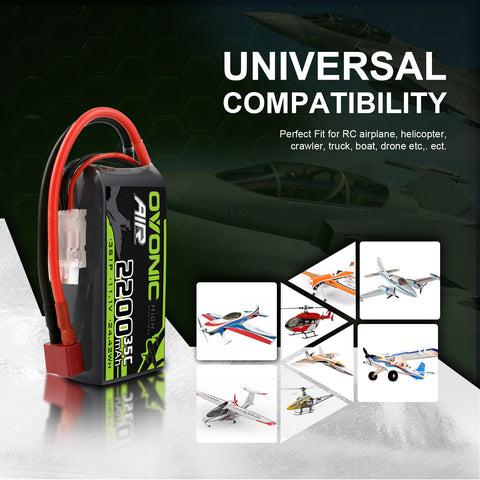
How to choose ESC for your FPV
What is FPV ESC?
In short, the remote control receiver processes the direction and angle signals from the transmitter into a current potential signal and inputs it to the ESC. The ESC supplies power to the motor and indirectly controls the motor speed by changing the motor current. The ESC supplies power to the servo and is controlled by the potential signal steering angle

So, how to choose ESC for your FPV
- First, we need to pay attention to its Amperage and Input voltage
1.Amperage
ESC has 2 types of rated current: continuous and burst. The continuous current rating indicates the maximum continuous current that the ESC can safely handle. It is doubtful that the maximum throttle may be used for a long time even when racing, but ESCs are usually designed to withstand higher currents for a short period of time (for example, 10 seconds), which is the "burst" current rating.
The size and quality of these FETs determine the current (amperage) that can pass through the ESC. Most ESCs have ratings such as "30 amps" or "25 amps." These numbers usually represent the continuous current that the ESC can handle. In a short time (usually less than 10 seconds), the ESC can handle more current. It is usually seen that an ESC marked "30 A" can produce a 40 A "burst" ESC. When purchasing an ESC, the ampere rating is an important consideration. Compared with an ESC that may be damaged by excessive current, it is better to obtain an ESC with a larger current at the expense of size or cost. Larger motors tend to absorb more current, while larger propellers or propellers with larger pitch will also absorb more current. Currently, for a 4-cell battery (4S), a 30-amp ESC is sufficient for most pilots.

2.Input voltage
Some ESCs may support input voltages up to 6S, and some may only support 4S. Make sure they are compatible with the LiPo voltage you want to use the mini quad core. Using too high a voltage to power the ESC will blow them up, and may even blow up the motor.

With or without BEC-photoelectric ESC
Some ESCs have a built-in BEC (Battery Elimination Circuit) that can output 5V (which can be used to power the flight controller, RX and other components). Those products that do not have a built-in BEC are usually referred to by the market and manufacturers as "photoelectric" ESCs. Despite this claim, in fact, optoelectronic isolators may actually be used.
It basically separates the high-voltage circuit from the low-voltage circuit and prevents the rapidly changing voltage from damaging the electronic equipment or interfering with the signal from the FC.
ESC without BEC has the advantages of lighter weight, smaller size and lower noise (because the motor control circuit is optically isolated from the radio receiver and flight controller).
However, if there is no 5V BEC, then FC and RX will require separate power supplies. (Note: ESC without BEC has no "red" servo wire, only signal wire and ground wire)
- Then, we should consider 3 main factors. Three considerations for choosing ESC include:
*Motor size: The size of the motor will largely determine the amperage that the ESC must be able to handle.

*Battery: Will you use a 3s battery or a 4s, 5s or even 6s rc battery? The rated amperage of the ESC and battery.

*Propeller: The choice of propeller will also determine the ampere rating the ESC should have. Will your drone spin a 3, 4, 5 or 6 inch propeller? Which performance do you want and what propeller pitch will you use?
Suppose you are interested in drone racing. Almost all modern racing cars use 5-inch high-pitch propellers. In order to make these high-pitch propellers spin at high RPM, pilots will choose motors with specifications of 2207 and 2450kv. This electric motor with aggressive pitch props can pull up to 40 amps. Therefore, it is very important to choose the correct ESC so that the FETS on the ESC will not be damaged by the current and will not cause the game to fail halfway. Therefore, it is best to design drones according to your specific needs and applications. However, it is easier to choose an ESC for this voltage, because ESCs are marked with a rated value indicating the battery voltage (S) they can handle.
In conclusion
before choosing your FPV drone ESC, confirm your frame type, prop size, flight method, and then use the data, prop selection and personal preferences to determine the best motor and ESC for your build.


Leave a comment